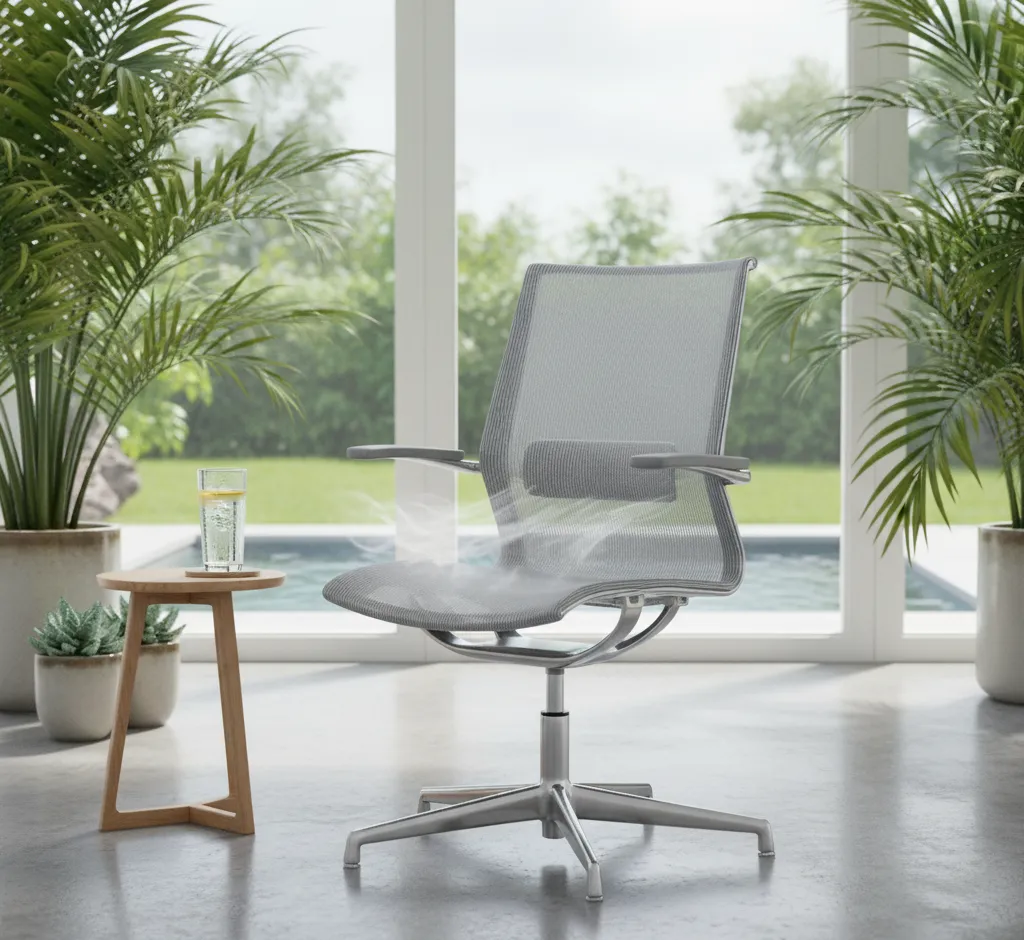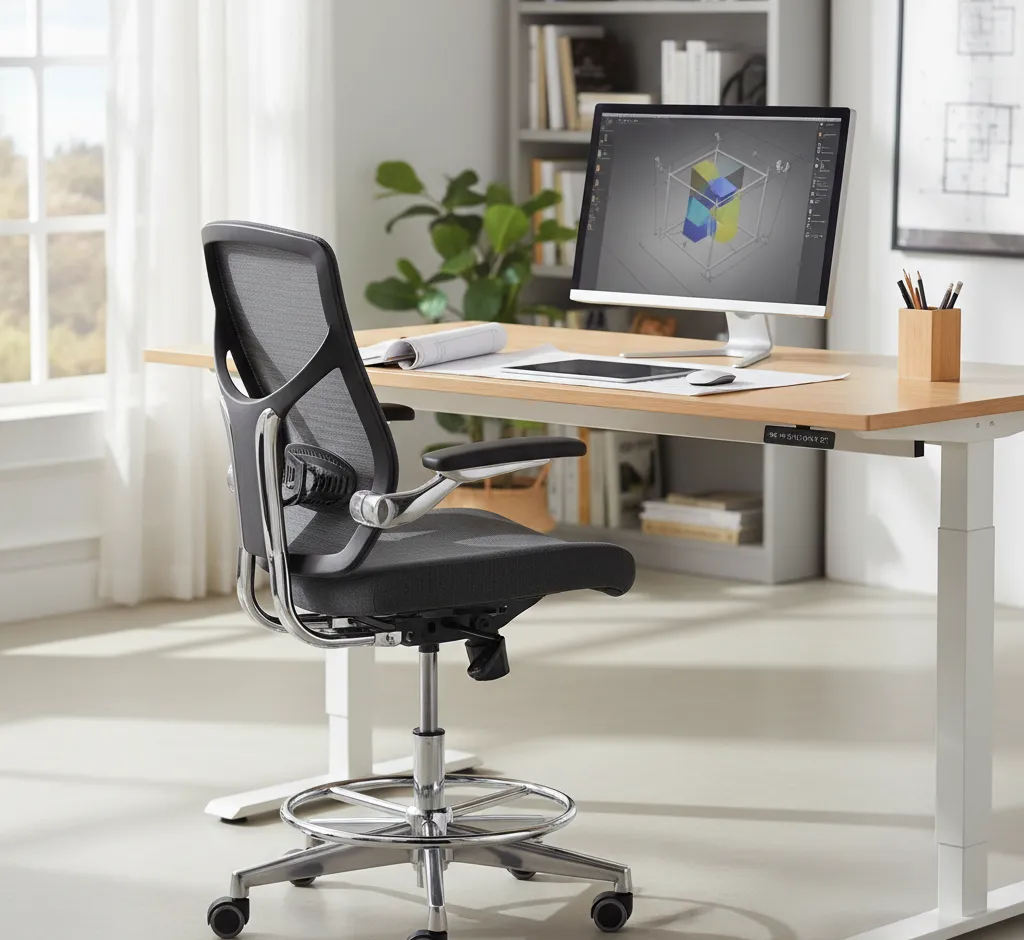The Ultimate Guide to Choosing the Best Chairs for Multiple User Households
Find the best ergonomic chairs for multi-user households. Discover key features like dynamic lumbar support, 4D armrests, and seat depth adjustability essential for accommodating different body types and ensuring long-term comfort and durability in shared home offices.

In the modern home, the line between living space and workspace is more blurred than ever. With hybrid work models, online education, and shared gaming setups, a single chair often serves multiple members of a household, each with their own unique ergonomic needs, body type, and sitting style. This high-demand environment turns the simple act of choosing a chair into a critical investment in family health, comfort, and long-term productivity. When a chair is used by a 6'4" father, a 5'2" mother, and a rapidly growing teenager, 'one-size-fits-all' is a recipe for back pain. The solution lies in selecting seating that embodies three key principles: Maximum Adjustability, Robust Durability, and Intuitive Design.
Understanding the Multi-User Challenge
A single-user environment is predictable. The chair can be set once and left alone. A multi-user environment, however, is a dynamic challenge. The chair must perform a rapid transformation, accommodating different weights, heights, and tasks—from intense deep-focus work to casual web browsing or gaming. Ignoring these variables leads to a chair that is only comfortable for one, or worse, comfortable for none. The goal is to find a 'universal fit' chair that is universally adaptable.
Key Ergonomic Features for Shared Seating
For a chair to truly excel in a multi-user household, it must offer a comprehensive suite of adjustments that are easy to access and intuitive to operate. The following features are non-negotiable:
- Adjustable Seat Height: This is the most basic yet crucial feature. It ensures that every user can sit with their feet flat on the floor and their knees at a comfortable 90-degree angle, maintaining healthy circulation and posture. A wide height range is essential to accommodate the 1st to 99th percentile of users.
- Adjustable Seat Depth (Seat Slider): For households with users of varying leg lengths, this feature is critical. It allows shorter individuals to avoid pressure behind the knees while ensuring taller individuals receive proper thigh support. The seat pan should be able to move forward and backward easily.
- Dynamic Lumbar Support: The lower back curve varies greatly between individuals. Look for lumbar support that is adjustable not just in height, but also in depth (firmness). This allows each user to precisely target the natural curve of their spine, promoting the correct posture and reducing strain.
- 4D Armrests: Armrests that adjust in height, width, depth, and pivot (inward/outward) are vital. They allow each user to position their arms comfortably at desk height, minimizing tension in the shoulders and neck, regardless of their torso width or desk setup.
- Headrest (Optional but Recommended): A height and angle-adjustable headrest is a significant bonus, particularly for those who recline for phone calls or momentary rest. It must be adjustable enough to provide neck support for both the tallest and shortest users.
The Anatomy of a Durable Multi-User Chair
In a shared environment, a chair's structural integrity is tested daily. What is a 5-year warranty for a single user might only translate to two years of comfortable use in a household with three regular users. Therefore, construction quality is paramount. You are not just buying a chair; you are investing in a durable piece of functional furniture.
Materials and Construction Standards
- Frame: Opt for chairs with a heavy-duty frame made from steel or aluminum. These materials provide superior stability and a higher weight capacity, often up to 300 lbs or more, which is a good indicator of overall structural resilience.
- Upholstery: Consider the trade-offs between materials.
- Performance Mesh: Excellent for breathability, keeping different users cool during long sessions. High-quality mesh is also very durable and resistant to sagging. Brands like Herman Miller's Aeron use proprietary meshes that distribute weight intelligently.
- High-Quality Fabric/Leather: While traditional, look for stain-resistant, high-density fabrics. Leather, while luxurious, requires more maintenance and may not be as breathable as mesh. High-density molded foam for the seat cushion is essential to prevent it from flattening or losing support over time.
- Mechanism: The quality of the tilt and adjustment mechanism is where cheaper chairs often fail first. Premium chairs use synchronized mechanisms or advanced tilt technologies (like Steelcase's LiveBack or Herman Miller's Harmonic Tilt) that are built for multi-shift use, ensuring smooth, reliable, and noise-free adjustments for years.
- Casters: Choose chairs with high-quality, heavy-duty casters (wheels). In a multi-user environment, the chair is moved and often abused more frequently. Look for smooth-rolling, durable dual-wheel casters, which can sometimes be upgraded for specific floor types (carpet vs. hard floor).
Top Contenders: Chairs Engineered for Shared Use
Certain chair designs have risen above the rest in the corporate and home office spheres specifically because of their superior range of adjustability and robust build quality. These models minimize the time and effort required for users to personalize their fit.
1. The Fully Adjustable Ergonomic Task Chair
These chairs are the gold standard for multi-user setups, designed with a dial-in approach to fit. They offer the widest range of adjustments and a durable, multi-shift design. Examples include:
- Herman Miller Aeron (with size options): While not a single chair, the availability of three sizes (A, B, C) ensures that nearly every body type, from the 1st to the 99th percentile, has an ideal fit. Its 8Z Pellicle suspension mesh is famously supportive and breathable.
- Steelcase Leap: Arguably one of the best for accommodating diverse users. Its LiveBack technology intuitively changes shape to mimic and support the natural movement of the user's spine as they recline. The Natural Glide System keeps the user oriented toward their work surface, a massive benefit when different users sit at different desk heights or angles.
- Haworth Soji or Zody II: These offer intuitive adjustments, often including adjustable lumbar support that can be dialed in for different firmness levels, which is a major benefit for shared use.
2. The Intuitive & Active Seating Chair
These models focus on reducing the number of manual adjustments by using passive, weight-activated mechanisms. They are excellent for environments where users switch frequently and want minimal fuss.
- Humanscale Freedom (with or without headrest): Known for its weight-sensitive, self-adjusting recline. It minimizes manual controls, allowing different users to achieve immediate, custom-fitting support simply by sitting down. It's a great 'sit-and-forget' option.
- HAG Capisco: An unconventional but highly effective choice for active households. Its unique saddle design encourages various non-traditional sitting postures (sitting forward, sideways, or even backward against the backrest), promoting movement and flexibility, which is ideal for different tasks and body types.
The Consideration of Aesthetics and Space
Unlike corporate offices, home offices are often part of a larger living area. The chosen chair must integrate with the home's aesthetics while remaining highly functional.
Design Integration and Footprint
Multi-user chairs don't have to look like bulky corporate behemoths. Many premium manufacturers now offer a range of frame colours (e.g., black, white, polished aluminum) and upholstery options (mesh, fabric, leather) to blend seamlessly with home décor. Furthermore, consider the chair's footprint:
- Sleeker Profiles: Chairs like the Herman Miller Sayl or the Branch Verve Chair offer a full suite of ergonomic adjustments but in a lighter, less imposing profile, which is perfect for smaller or multi-purpose rooms.
- Stool Alternatives: For shared standing desks or brief-use collaborative spaces (like a kitchen island desk), an adjustable, ergonomic stool (such as the HAG Capisco Puls or a high-quality sit/stand stool) can be an excellent alternative, promoting core engagement and easy height changes.
A Final Check-list for Long-Term Value
Before making a final purchase, particularly of a high-end chair that represents a significant investment, evaluate the chair against this multi-user specific checklist:
- Adjustment Simplicity: Are the controls clearly labeled, easily accessible, and simple enough that a new user won't need to consult a manual every time? Intuitive levers and dials save time and ensure everyone actually uses the chair correctly.
- Warranty and Customer Support: A high-quality chair for a demanding, multi-user environment should have a substantial warranty—ideally 10+ years, covering 24/7/multi-shift use. This is the ultimate proof of the manufacturer's confidence in the chair's durability.
- Weight Capacity: Does the chair's weight capacity comfortably exceed the weight of the heaviest user? Over-specifying this ensures the longevity of the lift mechanism and frame under constant, varied load.
- Breathability: Given the long cumulative hours, is the material breathable? Mesh is often the safest bet for maintaining comfort across various room temperatures and user preferences.


